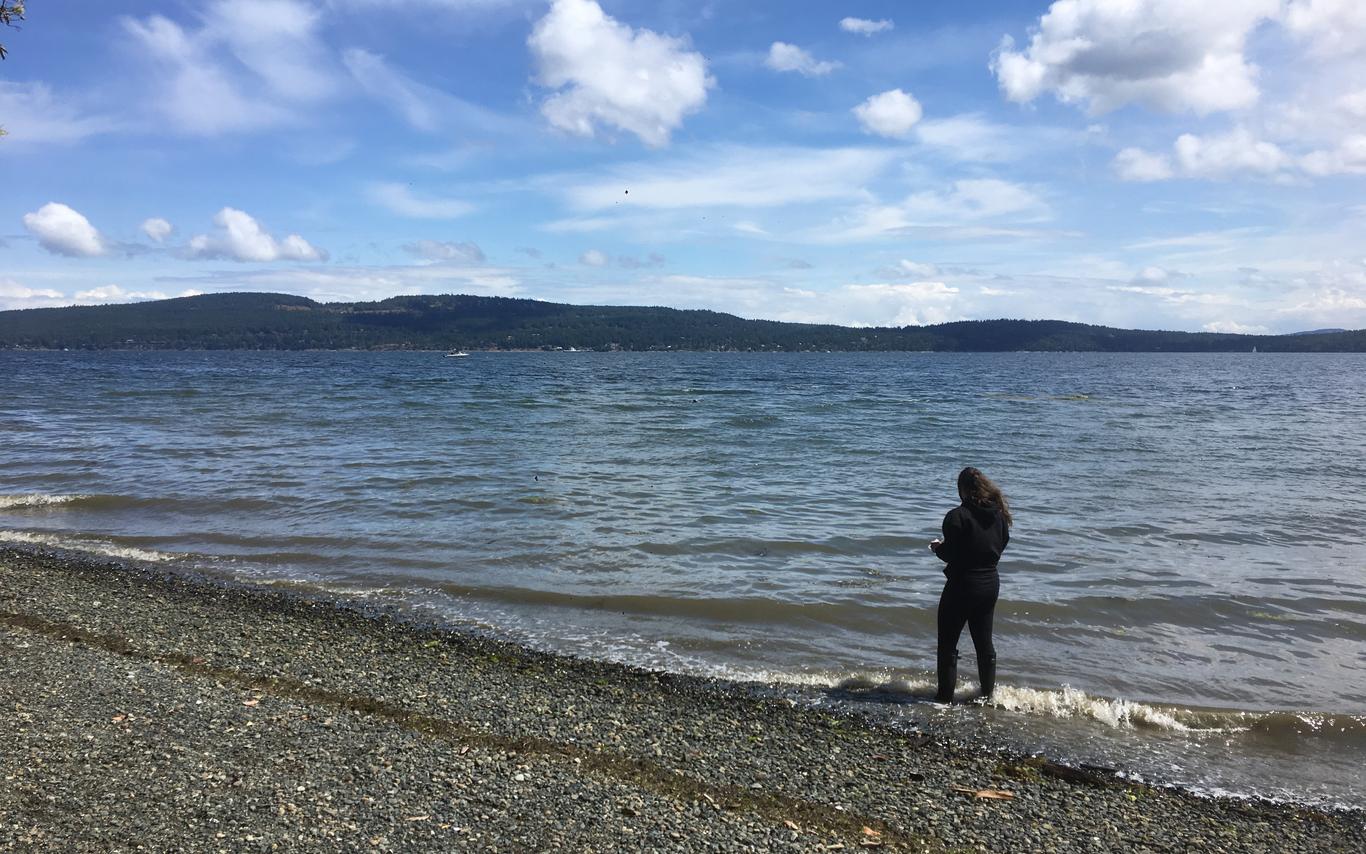I’m a student research assistant with MABRRI for the summer and a part of my job is helping sample for forage fish embryos! The term ‘forage fish’ refer to small prey fish that feed the larger, pelagic fish in the ocean. Common forage fish include sardines, herring, and anchovies but the two we’re interested in are the Pacific sand lance and surf smelt. Both these species lay their eggs in the sand; Pacific sand lance spawn in the fall and winter months, while the surf smelt spawn in year round. Surf smelt embryos haven’t been found by the MABRRI team just yet, but our fingers are crossed for this season!
Alanna and I headed out to Cowichan Bay to sample the beaches, while Haley and Amanda sampled from Ladysmith to Parksville. Sediment composition changes throughout the year, so some of the beaches on our list weren’t appropriate spawning material for the target fish and had to be skipped. Even though it can be disappointing not getting to sample every beach, it was worth the walk down just to see how beautiful the beaches of Vancouver Island are. I definitely had my daily steps in by the end of the day!
The next day we headed out to process all the samples, using the vortex method. It’s impressive how a 4-litre bucked of sand can be condensed into such a tiny sample. The vortex method works the same as gold panning, where the heavy material sinks and the lighter material is washed out, except in our case we’re after the lighter material. Lighter material is typically made up of organic matter such as broken-down seaweed, woody debris, fish eggs, and many, many worms. No gold here!
The remaining sample is examined under a microscope, which sounds like a tedious task, but in reality, it is one of my favourite things to do during the workday. The sand is magnified and illuminated by the microscope light, which shows some of the beautiful colours and shapes you can’t see with the naked eye. So far there haven’t been any embryos from our target species, but it is still early in the summer, and we’re holding out hope!
